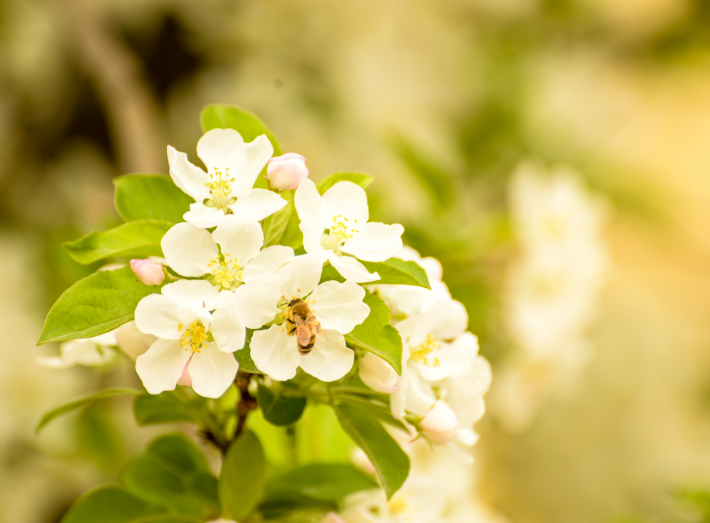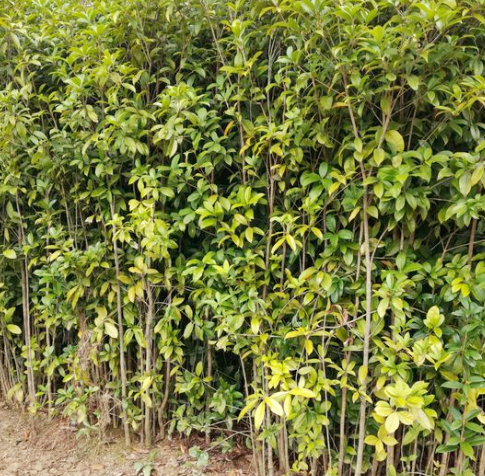Is the Begonia flower called "Flower Noble Concubine" poisonous? How to breed?
Crabapple flower because of its rich color and beautiful, high ornamental value, so it has the reputation of "flower imperial concubine", loved by many flower friends, want to breed, but it is rumored that it is poisonous, so crabapple flower is really poisonous? How to breed it?
Is the crabapple flower poisonous?
According to the data, the research shows that the crabapple flower is indeed poisonous, but the toxicity is only mild. The toxicity of the crabapple flower is concentrated in the stem juice, root, leaf and flower. As long as it is not eaten, the human body will not be able to absorb the toxicity and will not cause harm to the human body. Therefore, the crabapple flower is generally no problem in family breeding, but it should be noted that if there are children and the elderly at home, in order to prevent them from touching and putting it into the mouth. It is better to put it in a place where they are not easy to touch, especially begonia had better move out at night, in case of poisoning, it can cause vomiting, itchy skin, diarrhea, sore throat and even difficulty breathing. In fact, many flowers in family farming contain mild toxins. As long as you pay attention to matters such as air circulation during breeding, there will not be very serious consequences in general, so there is no need to worry too much. If you are really worried about breeding, you can consult in advance.

Second, how to cultivate crabapple flowers?
1. Soil selection
The rhizome part of crabapple flower is relatively tender and fragile, so the requirement for soil before culture is relatively high. When selecting soil, we must choose loose, fertile and well-drained soil as substrate culture, because if the soil is sticky or strong, it will affect its growth, thus hindering its root growth. Of course, if there are conditions, you can also deploy the culture medium by yourself. The method of blending soil can be mixed with rotten leaf soil and river sand according to 7:3 and then mixed with appropriate amount of cake fertilizer.
2. Watering method
Begonia flowers have strong drought tolerance but can not accumulate water, so watering during culture can only keep the soil moist, but be careful not to be too wet so as not to cause stagnant water, and secondly, it should not be too dry. If the soil is too dry, the absorption capacity of plant roots will become weak, resulting in dehydration, yellowing or wilting of plant leaves, and even death of plants. Watering frequency is usually 3-5 days in spring. In summer, because the temperature is higher, the water evaporation is large, so the watering frequency needs to be watered every 1-2 days, and in autumn, the watering frequency is 4-6 days, while in winter, the low temperature water evaporation is less and the plant activity is low, so the watering frequency is generally 15-20 days.
3. Fertilization method
If you want crabapple flowers to grow brightly and quickly, fertilization is one of the essential procedures. In addition to fertilizing nutritious soil, topdressing should be carried out once a year after flowering, and each time the plant is ditched. When applying rotten organic fertilizer, it can be slowly absorbed by covering the soil and watering it, which can provide it with growth needs. Phosphorus and potash fertilizer is the main organic fertilizer applied in autumn. This can not only meet the nutrient needs of its growth, but also promote its flower bud differentiation.
4. Light temperature
Begonia flowers blossom in spring, usually only once a year, but if the light and temperature are properly managed, they can blossom again in autumn. Specific light and temperature management methods can cool and shade them. When it is hot and rainy from June to July in summer, the crabapple flowers can be moved to a shady and rainy place to cool down. Of course, sunshade and rain shelter facilities can also be built to reduce watering. This can also control the vegetative growth of the plant, and then slowly reduce the amount of water, until the leaves of crabapple flowers wither and fall off into the dormant period, and then carry out a small amount of watering to maintain its growth, and wait until the dormant period is over. and then put it under sufficient light conditions to water and fertilize, so that the flowering buds of begonia can germinate and bloom again.
Conclusion: the above is about whether the crabapple flower is poisonous and the breeding method related introduction, hoped to have the help to the needy friend!
Time: 2019-03-13 Click:
- Prev

How much is the price of osmanthus tree? What are the planting prospects?
I believe many people have seen the sweet-scented osmanthus tree. It is a tree that is evergreen all the year round. Especially in the blooming season, the fragrance of the sweet-scented osmanthus tree and the fragrance of the flowers attract the praise of many people. It is planted all over the country, and many growers want to plant it one after another. So how much is the price of the sweet-scented osmanthus tree? What are the planting prospects?
- Next

How much is a yew, the giant panda in plants? What are the planting prospects?
Taxus is a precious plant, an ancient tree species left over from Quaternary glaciers, which is listed as a first-class protected plant in China, so it also has the title of giant panda among plants, which is very suitable for planting in the north and south. So how much is a yew? What are the planting prospects? How much is a yew?
Related
- Fuxing push coffee new agricultural production and marketing class: lack of small-scale processing plants
- Jujube rice field leisure farm deep ploughing Yilan for five years to create a space for organic food and play
- Nongyu Farm-A trial of organic papaya for brave women with advanced technology
- Four points for attention in the prevention and control of diseases and insect pests of edible fungi
- How to add nutrient solution to Edible Fungi
- Is there any good way to control edible fungus mites?
- Open Inoculation Technology of Edible Fungi
- Is there any clever way to use fertilizer for edible fungus in winter?
- What agents are used to kill the pathogens of edible fungi in the mushroom shed?
- Rapid drying of Edible Fungi

